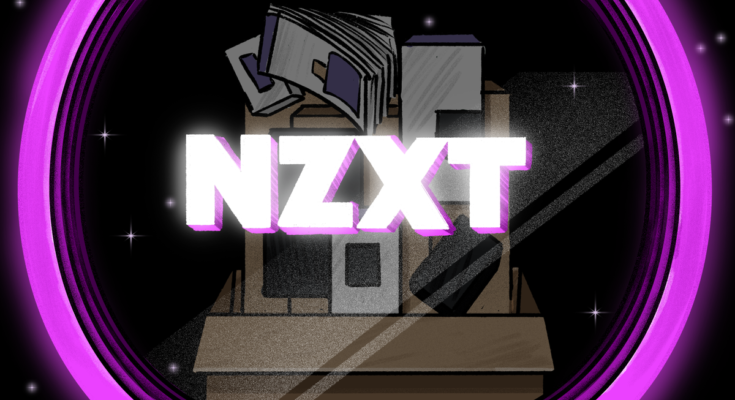The ability to build a PC is a valuable skill if you’re serious about gaming or interested in computer tech in general. Installing future upgrades, troubleshooting errors, and fine-tuning your machine to run games and apps is a lot easier when you know exactly which components are in your PC, how they connect to each other, and where each wire goes.
Unfortunately, learning how to actually build your own computer can be difficult. To an outsider looking in, the hobby can be a daunting mess of wires and circuit boards. (Expensive wires and circuit boards.) For that very reason, many PC users opt for a pre-built computer from one of countless companies. While that’s an easy way to get a powerful PC with minimal effort, pre-built PCs won’t teach you much about your machine or its hardware.
That’s where NZXT’s new BLD Kit comes in.
NZXT’s BLD Kits are intended to offer an approachable way to DIY your own PC with specs based on the company’s pre-built PC models. Each kit includes all the components provided in one of the latter models, but users assemble the entire computer themselves.
The question is: are these PCs actually worth the price and the time and effort required to build them yourself? Or is this simply a way for the company to offset labor costs onto the consumer?
NZXT recently sent us a sample of its Streaming Plus BLD Kit, giving me an opportunity to answer those questions for myself.
Based on my experience building and using NZXT’s Streaming Pro BLD Kit for the past week, I think there’s a lot of value in the BLD Kit. It takes the guesswork out of finding the right parts while still offering user hands-on PC building experience. In fact, a BLD Kit may be one of the best ways for first-timers to learn computer building, and a viable option for anyone looking for their next gaming PC.
What’s in the box?
When NZXT says the BLD Kit comes with everything you need to build your own PC, the company means it: Every piece of electronic hardware, from the case to the motherboard, and every component and cable you slot into them, is part of the mix.

All BLD Kits come with NZXT’s H510 desktop case—you choose black or white—but the specific parts that go into it vary with the kit you choose.
NZXT sent us the Streaming Plus kit ($1599), which runs the following specs:
- AMD Ryzen 5 5600X processor
- GeForce RTX 3060 Ti GPU
- 16GB DDR4 3200MHz RAM (2 x 8GB sticks)
- 1TB NVMe M.2 SSD
- 650W Bronze power supply unit
- NZXT Kraken M22 liquid cooler
There is also the Starter Pro kit ($1399) available with similar specs, but with an Intel Core i5-11400F 6-Core 2.6 GHz, a 550W Bronze power supply, and fan-based cooling instead.
In addition to the PC hardware, all BLD Kits also include:

- An illustrated and labeled checklist of every item in the BLD Kit.
- A 183-page instruction manual that walks you through the build, plus OEM installation guides for every part.
- A tool set that includes a keychain LED flashlight, snippers, a screwdriver with three swappable bits, and a carrying case.
- An assortment of cables, screws, fasteners, and zip ties for cable management.
- Windows 10 Home edition DVD and authentication key.
(Note: BLD Kits do not include a monitor, keyboard, mouse, gamepads, or any other peripherals. You’ll need to buy those separately or use the accessories you already own.)
BLDing the BLD Kit
The BLD Kit ships in a single large box, with each item therein comes sealed in its own packaging, so there’s a lot to unbox before you get started. The pile of parts may seem daunting at first glance, but NZXT wisely labels each box or bag with a letter, and each step in the instructions lists which parts and tools you need by name and letter. It’s kind of like putting together a LEGO set—there are even QR codes you can scan with your phone to bring up video versions of the walkthrough.
NZXT injects the instructions—and the entire BLD Kit package—with a charming cartoon-fantasy aesthetic that frames the walkthrough as a treasure-hunting dungeon crawl, giving what is normally a dry, technical process a more welcoming vibe. I mostly opted for the video walkthrough, but the printed book is well-written and includes clear visual instructions for every step. It also gives users plenty of warning if a part requires extra care or specific handling.

Overall, I had fun assembling the BLD Kit. I do have prior PC building knowledge, but aside from installing a few upgrades on my old PC, the last time I built a rig from the ground up was almost 10 years ago, so I went into the assembly with a equal mixture of curiosity and caution. Luckily, NZXT’s walkthroughs made the process simple. Following along with the guides, it took me about 4 hours to assemble the computer. A portion of that time included taking photos and jotting down notes along the way, but expect to spend at least a few hours on the build.
Of course, the true test of any build is whether the PC turns on properly once it’s finished. It’s easy to overlook small-yet-critical steps while building a PC—but the assembled kit booted up immediately and with no errors. (Phew.)

Once the PC is on, there’s not much else to do. You don’t need to install the operating system, the motherboard BIOS, or any other system-level software. A Windows 10 Home Edition installation DVD is included in the kit, but you only need it for the product authentication key printed on the case, and the OS comes preloaded and runs immediately. The only post-boot up tasks you need to worry about are running the Windows 10 setup wizard, authenticating the OS in the system settings, and downloading a few system updates.
BLD Kit performance
With the PC up and running, I took a few days to put it through its paces.
In terms of hardware power, NZXT’s Streaming Pro PC is great. Newer games like Phantasy Star Online 2: New Genesis and Halo: Master Chief Collection, and apps like Adobe Premiere CS—all of which struggled to run on my old PC—load fast and perform wonderfully.
Sure, the PC’s specs don’t represent the bleeding-edge apex, and my impressions are biased since the Streaming Pro PC is a marked improvement over my previous machine, but it certainly is powerful enough to handle both modern games and professional media creation.
However, since this is a PC I built myself from parts pre-selected by NZXT, we also have to judge how the PC and its parts function at a more basic level.
For the most part, the computer has run properly in the week since I completed it. There have been no issues with any of the components, drivers, or the OS, save for a strange hiccup with the wifi card—for some reason, my connection speeds were abysmal.
I double-checked that the wifi card was properly installed and found no problems, so I checked to see if this was a common complaint. Based on reports from other customers using PCs with my specific wifi card (NZXT users or otherwise), this specific component seems to be notorious for slow wifi connections. Some claimed activating Windows 10 fixes the issue, but that was one of the first things I did after booting up the PC, so it seems unlikely. Other folks fix the problem by connecting to their router’s 5GHz signal, but I haven’t seen any difference between the 5GHz and 2._Hz signals. Ultimately, I hard-wired the PC to my router to circumvent the issue. While my internet speeds are now normal again, the slow wifi connection persists.

I’m not blaming NZXT nor the BLD Kit for my wifi woes. Unlike its pre-built desktops, NZXT can’t test to make sure everything in your BLD Kit works properly before shipping it to you. The wifi issues would be more frustrating if this were a pre-built PC assembled by NZXT, but chances are good the issue can be blamed on an incorrect installation on my end, or perhaps my specific wifi card is faulty; neither of these factors are within NZXT’s control (though the company’s 2-year BLD Kit warranty guarantees NZXT will help you out if something doesn’t work or arrives broken).
That said, my wifi issue underscores an important thing to remember about the BLD Kit: Building the PC yourself puts the onus on you to assemble, test, and troubleshoot every aspect of the computer yourself. That remains true even when a company picks out the parts for you, sends you all the necessary tools, and guides you through the assembly process. For that reason, the NZXT BLD Kit (or building a PC in general) isn’t for everyone.
Is NZXT’s BLD Kit worth it?
NZXT’s BLD Kits have great specs, they look cool, and probably offer a faster (and cheaper, in some cases) way to get a high-end PC for gaming or content creation right now, but the product’s DIY nature will make or break it for most people.
If you don’t want to put in the time and effort required to build a PC, nor take on the responsibility of troubleshooting and fixing any problems that crop up along the way, stick with a pre-built PC—whether from NZXT or elsewhere.
Even if you’re into the idea of building your own machine, those who prefer to pick and choose their components may find NZXT’s pre-selected hardware limiting.

The BLD Kit’s true selling point is it teaches you how to build PCs and familiarizes you with your desktop’s hardware. Knowing exactly which components are in your PC, how they connect to each other, and where each wire goes will make it easier when you’re installing future upgrades, troubleshooting errors, and fine-tuning games and apps to run on your machine.
To that end, I found the BLD Kit to be an excellent introduction (or in my case, refresher) on PC building. Whether you’re looking for an easy way to start building your own computers; are an experienced builder who enjoys assembling new computers; or you want to build a new PC without the hassle of shopping for each part individually, then the BLD Kit is worth the money. It’s arguably the best way to buy a PC right now.



